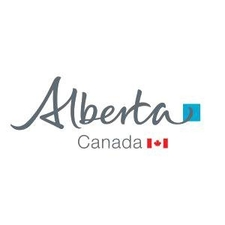XML
Type of resources
Available actions
Topics
Keywords
Contact for the resource
Provided by
Formats
Representation types
Update frequencies
status
-

Compiled by Alberta Data Partnerships Ltd. (ADP), on behalf of the Government of Alberta, the ATS v4.1 Polygons - Township Index polygon layer contains polygons that represent the location of Township polygons, derived from the Master Alberta Township System points file published as ATS Version 4.1, dated March 31, 2005, and clipped to an updated Alberta Data Partnerships Ltd. (ADP) created version of the Alberta provincial boundary. No road allowance segments are included in this layer.
-

Oil Sands Agreement feature class contains provincial extent polygon features representing Oil Sands applications, agreements, leases, and licences, with varying term dates and conditions. These applications and subsequent agreements give the holder the right to explore Oil Sands.
-

Compiled by Alberta Data Partnerships Ltd. (ADP), on behalf of the Government of Alberta, the ATS v4.1 Polygons - Legal Subdivision (LSD) with Road Allowance layer contains polygons that represent the location of LSD and adjacent Road Allowance Segment polygons, derived from the Master Alberta Township System points file published as ATS Version 4.1, dated March 31, 2005, and clipped to an updated Alberta Data Partnerships Ltd. (ADP) created version of the Alberta provincial boundary. Legal Subdivisions and adjacent road allowance segment polygons are new data that were not available for publication at the inception of ATS Version 4.1.
-

The Resource Management Area (RMA) dataset is comprised of all the polygons that represent the resource management areas of the 17 Integrated Resource Plans (IRP) - Subregional in Alberta. This dataset does not include the RMAs of Local IPR plans due to the resource restraint. Future enhancement of this data set to include Local IRP plans is feasible when resources are available. A Resource Management Area is an area identified within a Sub-Regional IRP plan for more detailed land and resource management intent on a landscape assessment. Generally, a Resource Management Area is characterized by an intent statement and detailed resource management objectives and guidelines. However, there are IRP plans which have their own specific RMA definitions. Plans include, Lakeland Sub-Regional IRP: A RMA is a geographic area of common resource management intent. There is a management intent statement for each resource management area. The intent statement expresses the resource priorities for the area. Kananaskis Country Sub-Regional IRP: RMA areas identify broad units of land within the planning area which have distinct management intents and specific management objectives.
-

The Treaty Boundary dataset is comprised of all the polygons that represent the historical treaty lands of Canada negotiated by First Nations over the years through treaty-making between 1867 - 1999. The approximate boundaries illustrate the traditional territories described in First Nations Statements of Intent to negotiate treaties which have been submitted to, and accepted.
-

This file contains the June 2022 spatial data. ACIMS Non-Sensitive Element Occurrences for tracked species of conservation concern in Alberta. Vertebrate data is excluded. This file contains element occurrence polygons mapped based on NatureServe Methodology. ACIMS (Alberta Conservation Information Management System) is the Alberta member of the international network of NatureServe Conservation Data Centres. This dataset is publicly available on the ACIMS website. More information regarding ACIMS can be obtained at: https://www.albertaparks.ca/albertaparksca/management-land-use/alberta-conservation-information-management-system-acims/
-

The Fish Management Zone dataset is comprised of all the polygons that represent the Fish Management Zones in Alberta. Fish Management Zone is an area having its own unique assemblage of water bodies, species of game fish and management regimes.
-

Current conditions and forecasts for selected Canadian cities. Raw XML data are used to generate each city page on the Environment Canada web site https://www.weather.gc.ca/.
-

Environment Canada issues weather alerts about weather related hazards in order to notify those in affected areas so that they can take steps to protect themselves and their property from harm. Alerts are classified depending on the severity and timing of the subject event and include: warnings, watches, advisories and statements. Warnings are usually issued six to 24 hours in advance, although some severe weather (such as thunderstorms and tornadoes) can occur rapidly, with less than a half hours' notice.
-

Distribution (range) polygons were assembled by regional SARA biologists using the best available information, including COSEWIC status reports, recovery potential assessments, academic literature, and expert opinion. These spatial data support the protection, recovery and conservation of species listed as Extirpated, Endangered, Threatened or Special Concern under SARA. Species distributions are also described and displayed in Recovery Strategies, Action Plans and/or Management Plans. Discrepancies may exist between the distribution data shown in a species SARA recovery document and the current spatial data. Please contact DFO for more information on any data discrepancies. Please refer to the metadata included with the data for full entity attribute information
 Arctic SDI catalogue
Arctic SDI catalogue